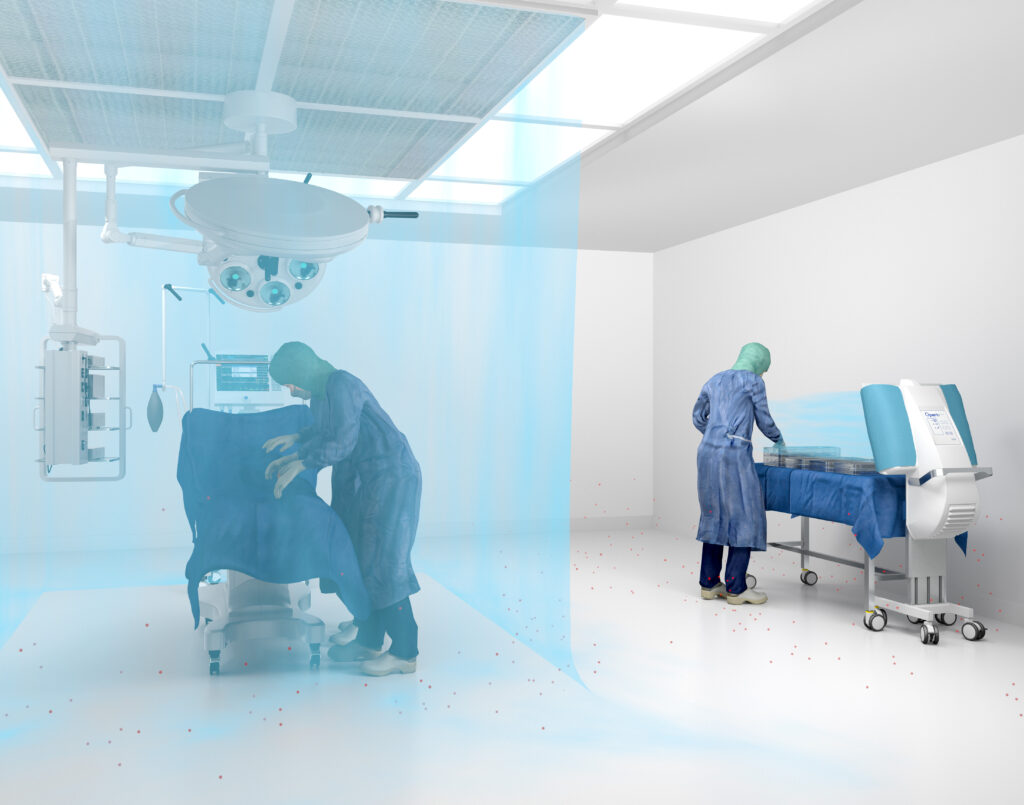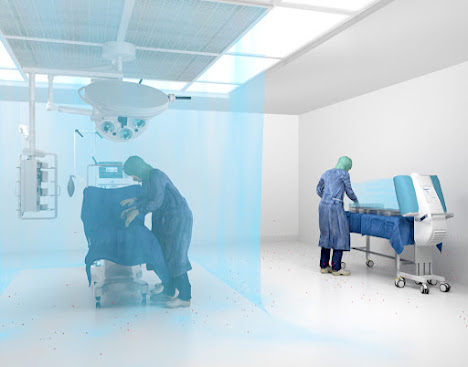Even the smallest details matter in operating rooms and crucial medical areas. Proper ultra-clean ventilation systems, for example, are essential to the success of medical treatments and the avoidance of post-operative complications.
According to international healthcare design standards, air must be refreshed at a high number of cycles per hour to reduce the risk of infection. Integrating a system that allows accurate control of air movement, for example, improves the removal of pollutants from the operating room. According to several studies, nearly 6% of patients contract a hospital infection. The most common cause of intra-operative infections is a non-functioning or faulty ventilation system in operating rooms, which is one of the primary means of spreading infection. Securing the operating space and making sure the sterility of equipment is extremely crucial for patient care and the surgical staff's work. Read this article to the end to understand ultra-clean ventilation systems.
Factors influencing air quality
Several factors influence the quality of the air in the operating room, including multiple and variable room designs because of the particular surgical procedure, heat dissipation produced by medical equipment, and the suspension of atoms or molecules with and without microbes because of the presence of staff. The constant need to expand the sterile/operative space needed for surgical procedures also plays a role in determining the sterility limit within the room.
Patients' infection risk can be reduced with ultra-clean ventilation systems
Some new clinical ultra-clean ventilation systems bring down the presence of microbes and pollutants in the air, leading to fewer infections and a relatively short post-operative recovery time.
Satisfaction and convenience of medical professionals
Because of the limited space of sterilized areas created by traditional laminar flows, newer ventilation systems provide the finest and most flexible workspace environments for healthcare professionals, who frequently work in high-stress situations. It generates an ultra-clean environment with enormous dimensions. Expanding the sterile head up to three times over traditional solutions enhances internal noise levels and presumed ventilation and clean airflow.
Our ultra-clan ventilation systems implement the Temperature Controlled Laminar Flow (TcAF) air diffusion system, which has a large body of scientific literature. The system integrates traditional mixed air circulation (which lessens the amount of bacteria-carrying atoms) at the room's periphery (air shower) with a single-direction flow in the center point. As a result, the operating room has a higher purity level.
We use fluid dynamics principles to distribute mildly cooled air just above the operating table, even as the uniform distribution of external air showers controls the temperature in the room. All of this is managed effectively and competitively: Our ultra-clean ventilation systems can save up to 30% more energy than standard laminar flow structures. By incorporating design and technology, our ultra-clean ventilation systems provide suitable workplace conditions for healthcare professionals in operating rooms and maximum patient safety. We fulfill ISO class 5 to achieve the maximum standards of purity, sanitization, and relaxation in operating rooms and hybrid rooms.






Comments